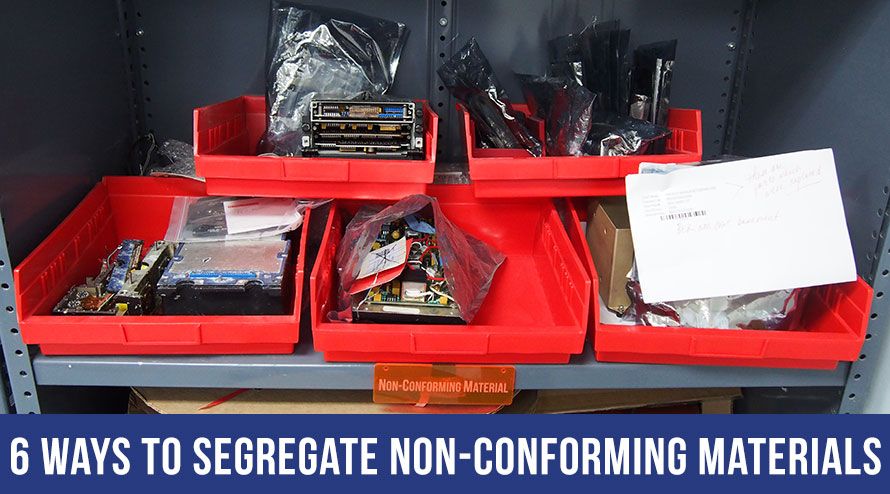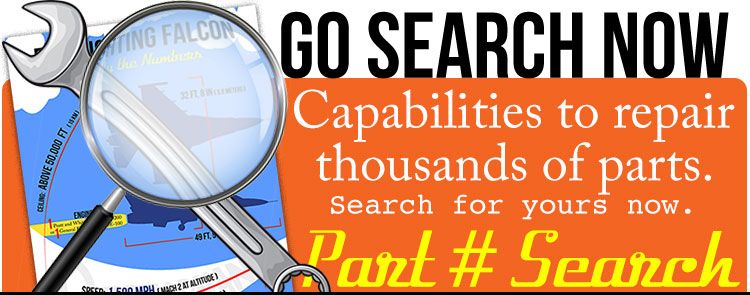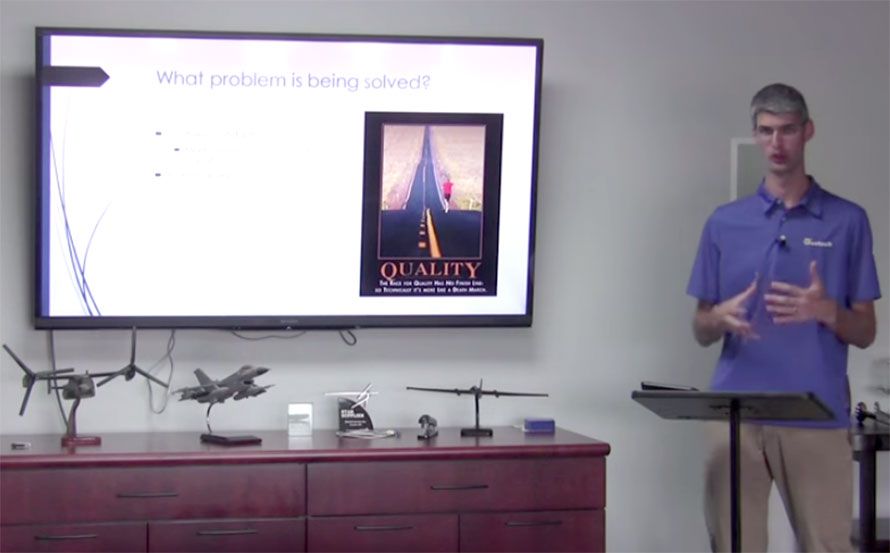
Img. 1 – Non-conforming Scrap in Place
Twelve drivers like the one pictured below in Img. 1 were sent to a depot repair station for repair. This particular one was deemed unable to be repaired by the repair depot and thus designated as non-conforming material. The customer chose to have this driver disposed of by the depot, so the repair station designated it as Scraped in Place, marking it accordingly for elimination and stored in a non-conforming material designated bin.
The multiplexer pictured below in Img. 2 was also sent to the depot repair station for repair. Following testing, the results and cost to repair the item were shared with the customer. The customer decided it would cost more to fix the multiplexer than it was worth. This was noted by the repair depot as being Beyond Economic Repair (BER). The item was documented as BER and listed as non-conforming. A red cap was placed over the pin to identify its non-conforming status, and the multiplexer was stored in the depot’s non-conforming materials bin.

Img 2. Non-conforming Beyond Economical Repair (BER)
What is Non-conforming Material?
These are products that do not conform to product requirements. They are identified and controlled to prevent their unintended use or delivery. The controls and related responsibilities and authorities for dealing with nonconforming products shall be defined in a documented procedure.
Any Knob Will Not Do
In simpler terms, non-conforming materials are any product or parts that are defective, counterfeit or do not meet the requirements. For example, if you are replacing a broken knob on a transmitter radio and the specification calls for a knob made of aluminum, but what you received from a vendor was a knob that met every requirement of the specification except that it was a resin material fabricated on a 3D printer, that knob would be non-conforming to the specifications necessary to repair the radio.
A non-conforming item can also be identified by the customer as Beyond Economical Repair like the example above. Equipment used for measuring that cannot perform its measuring tasks can also be identified as non-conforming.
An organization should have a document called a Quality Assurance Manual that illustrates the process for their policies of identifying non-conforming materials, documenting the items, and separating them from conforming materials. The manual should also identify who is the authority for the different stages of control and what responsibilities those authorities have. To be efficient, the manual should delegate who identifies whether a product is non-conforming, who then should move or handle it, who can authorize the disposition of a material, and finally who administers that outcome.
Once the material has been identified as non-conforming, your next step will be to immediately segregate the item away from the conforming material.
6 Ways to Segregate Non-conforming Materials

Img. 3 – Marking material as non-conforming
Marking the material with tags, signs, or stickers – There is no universal standard for identifying non-conforming material. A green tag would suffice just the same as a red tag. It is more important that everyone in the organization recognize non-conforming material with the marking identified in your quality assurance manual. Pictured here in Img. 3 is a non-conforming item marked with a red tag.
- Securing the material in a holding cage or designated cabinet specially marked for non-conforming material
- Putting the material in an appropriately identified bin, box, and bag, like the bins displayed in the primary picture of this article.
- Remove it from the production or repair area
- Recycle the material
- Put locks on the material to prevent its use
What do you do after segregation and identification?
The organization may deal with non-conforming products by one or more of the following ways:
- Elimination – The non-conforming item can be scrapped or returned to the vendor. It can also include reworking the item to bring it into conformance. If corrected, the item shall be re-verified to demonstrate conformity to requirements.
- Releasing – By authorizing its use, release or acceptance under concession by an authorized representative of the customer. A customer could authorize the use of the non-conforming part as is.
- Reprocessing – this disposition would be to change the item to be used for something entirely different from what was intended.
Training Is Key
The goal of a non-conforming material policy is to identify and contain the non-conforming material, ensuring that it never gets to the customer. If a bolt ordered for a project is delivered missing some of the threads, using the bolt anyway will degrade the quality and can create a safety hazard. It’s very important to have processes in place to guide an organization in the detection of a non-conforming item, directions for isolating the item in order to eliminate accidental use, and what to do with that product following detection.
To be ISO 9000 certificated requires an organization to have quality management procedures in place and the procedures observed. These policies are only as good as the training provided to the organization’s employees. Training for new employees is important immediately after hiring, and providing refresher training periodically is essential to consistency. Defined responsibilities and authorities are useless if nobody knows about them.
Attention To Detail Provides Quality and Safety to Our Customers
Duotech is a qualified FAA Repair Station and maintains AS9100D and ISO 9001 certifications with the scope of repair, design, production (including CNC machining and laser cutting), testing an overhaul service for electronic and electro-mechanical equipment for military and commercial applications.
From concept to implementation, Duotech’s capabilities encompass your entire project. On-site machining and fabrication shortens design cycles. Our staff puts time on your side. Whether J.I.T. or build-to-print, send us your requirements for aerospace quality work.
If you need an item repaired search our extensive support capabilities database. If you need to request a repair quote, we make it easy. Click here to Request a Quote for a Repair.








